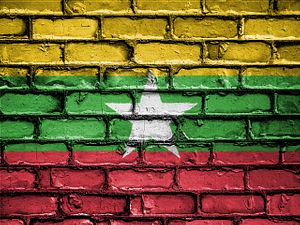Last week, Myanmar’s Air Force commissioned new aircraft as part of the commemoration of its 72nd anniversary. Though the development was just the latest in a series of routine anniversaries held in the country, it nonetheless put the spotlight on developments within the service as well as the wider modernization underway in one of Southeast Asia’s largest militaries.
Although Myanmar’s military, known as the Tatmadaw, is one of the biggest armed forces in Southeast Asia quantitatively speaking and has exercised significant political influence in the country, its capabilities have still significantly lagged behind those of some of its neighbors. However, over the past few years under the leadership of Min Aung Hlaing, the military has sought to further develop and modernize the institution, and services like the air force have seen advances in areas such as acquiring new weapons and building relationships with foreign militaries like Russia, China, and India.
Earlier this month, Myanmar’s air force capabilities were in the headlines again with the commemoration of the MAF’s anniversary. The MAF held its 72nd anniversary celebrations in a ceremony on December 15 at Meiktila Air Base, in an event that is closely watched by observers of the Myanmar military.
As with some previous iterations, several top Myanmar military figures were present at the ceremony, including Myanmar’s military commander in chief Senior General Min Aung Hlaing. And, notably, the ceremony also saw the commissioning of new aircraft into Myanmar’s air force. Min Aung Hlaing presided over the commissioning of aircraft that included two JF-17 “Thunder” multirole fighters, six Yakolev Yak-130 “Mitten” advanced jet-trainers/light attack aircraft, and two Mil Mi-35P “Hind” helicopter gunships.
The commissioning of the aircraft itself was a routine affair. This has been the case with previous anniversary celebrations before, the types of aircraft inducted were all already in service within the MAF, and Min Aung Hlaing framed the development in terms similar to earlier addresses, noting their effects on capability as well as the morale of the military.
In terms of quantity, though, this represented one of the larger inductions of combat aircraft in the service over the past few years, similar to the number last reached in 2017. And in terms of type, the fact that the sorts of equipment being inducted focused only on a narrower set of countries reflects the challenges that Myanmar’s military has faced in broadening out its alignments amid issues it has faced on various counts including on human rights.
In terms of significance, the development should be understood within the context of the Myanmar military’s continued effort to boost its capabilities in the face of internal and external challenges and relative to other regional countries. Military spokesman Zaw Min Tun reflected this sense rather candidly when he framed the induction of aircraft in terms of being “on par with international standards for a modern air force” and as part Naypyidaw’s effort to compete not with India or China, but “with our three other neighbors” Thailand, Laos, and Bangladesh in terms of aspects such as combat experience and assisting ground troops, according to The Irrawaddy.
To be sure, this event is just one of many that periodically spotlight Myanmar’s ongoing military modernization and the development of its air force capabilities. Nonetheless, the commemoration of the 72nd anniversary was a reminder of the changes underway and the opportunities and challenges that remain for the Tatmadaw moving forward.

































